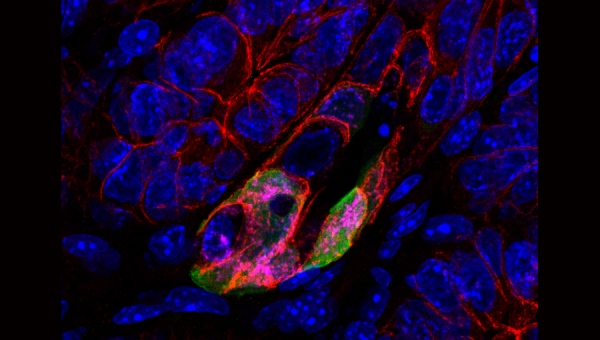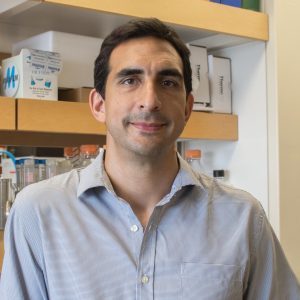
Team from RI-MUHC and Lunenfeld-Tanenbaum Research Institute “follow a gut feeling” and discover a new stem cell
Congratulations to Dr. Gregorieff and colleagues for their paper published in Nature: Single-cell transcriptomes of the regenerating intestine reveal a revival stem cell.

Dr. Alexander Gregorieff
The human body has a remarkable ability to repair and renew itself. However, as we all know, our regenerative capacity quickly dwindles once we reach adulthood.
Fortunately, this is not the case for all tissues in our body. For instance, the immune system and the external linings of the skin and gut renew themselves efficiently throughout life. In fact, under normal circumstances, even without apparent injury, these tissues harbour specific stem cells that produce a constant stream of new cells capable of replacing old or dying cells.
Unlike their more familiar counterparts, the embryonic stem cells, adult stem cells have a limited range of cell types into which they can differentiate. Despite this limitation, these cells act as fundamental components of the defense mechanisms protecting our bodies from microbial invaders, environmental toxins and even one’s own cells in autoimmune diseases.
The stem cells that fuel the lining of the gut epithelium represent one of the best understood adult stem cell populations. However, their exact function in response to injury has remained enigmatic for a long time. Previous research demonstrated that insults to the epithelium paradoxically lead to the disappearance of normal stem cells, raising the obvious question of what other cell type takes over the natural healing capacity of the gut under these extreme conditions.
In a recent issue of the journal Nature, a team spearheaded by Alex Gregorieff, PhD, of the Research Institute of the McGill University Health Centre (RI-MUHC) and Drs. Arshad Ayyaz and Jeff Wrana of the Lunenfeld-Tanenbaum Research Institute in Toronto discovered a new cell type called the “revival stem cell,” which may be the key to solving this mystery.
In their study, Gregorieff and colleagues used a number of genetic tools in the mouse and single-cell RNA sequencing to demonstrate that revival stem cells (or revSCs for short) act as a previously unrecognized stem cell population that is transiently mobilized to replenish the gut epithelium following tissue damage.
“We believe revSCs may play a major role in several illnesses affecting the gut, such as inflammatory bowel disease and certain infectious diseases, explains Dr. Gregorieff. “Understanding these cells and figuring out the signals underlying their potent regenerative potential will hopefully lead to novel therapeutic options for patients in the future.”
This work was funded by the Canadian Institutes of Health Research, the Cancer Research Society, the Sinai Health Foundation and the MUHC foundation.
Illustration: Labelled “revival” stem cells in the gut, photo credit: Shaida Ouladan.
Source: RI-MUHC, see their story here
